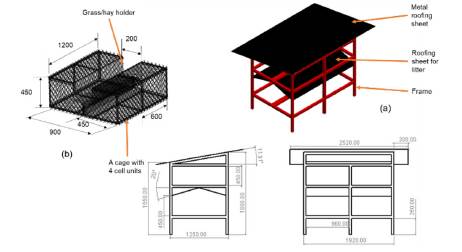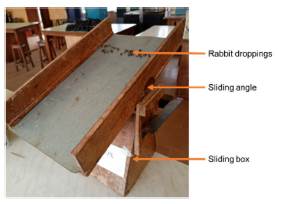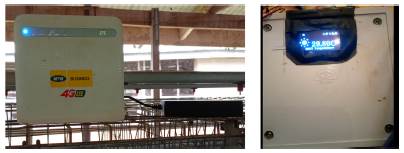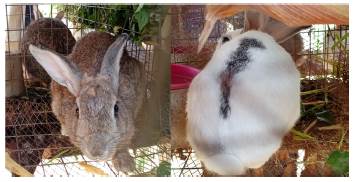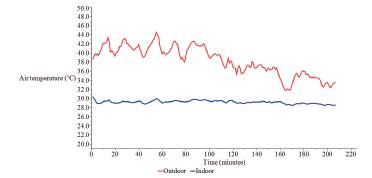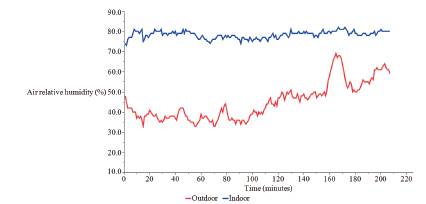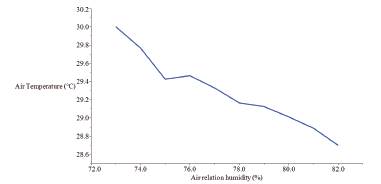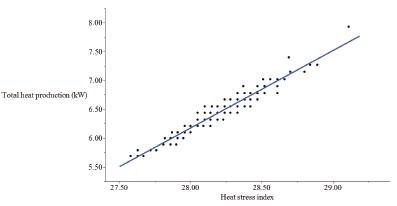INTRODUCTION
Globally, the constant increase in human population has greatly caused an increase in the dependence on agricultural products from small-scale farms 1. Over the years, ruminants (cattle, goats and sheep), poultry, and pigs have been the major animal protein sources. However, in recent times, there has been a significant decrease in their production and consumption as a result of a decrease in the available land spaces and the high cost of feed ingredients 1. Therefore, people tend to change to eating fish as an alternative to other sources of protein. However, it has been established that the health benefits of fish consumption could be compromised due to the presence of heavy/ toxic metals such as cadmium, lead and mercury in freshwater fish which could be harmful to the human body 2,3. Based on the challenges facing the available animal protein sources, there is a need to consider other animals which could serve as a safe source of animal protein.
Rabbits (Oryctolagus cuniculus) are sociable animals, that could easily be housed, less expensive to maintain, and can reproduce about six 6 times in a year 4. Rabbit meat is known to be cholesterol-free, contains high-quality protein and minerals compared to chicken and beef 5. Rabbits were initially found and daily consumed by the European and Central North African countries 5,6 but have over the year spread across the globe. Despite the recent growth in rabbit production globally, rabbits tend to be easily affected by heat stress most especially in the tropics 7. High indoor temperatures, above 30 °C, could result in breeders' infertility, lower feed intake, stunted growth and higher kit mortality 7.
Designing an appropriate housing system for rabbits could prevent them from the adverse effect of heat stress during the warmer periods of the year particularly in the humid tropical climate. However, rabbit farmers have no blueprint to follow in designing appropriate housing for their rabbits. They are fond of using any design they think could accommodate their rabbits without considering if such a design would meet the environmental needs of the rabbits. Oseni & Lukefahr 7 illustrated different designs of rabbit housing mostly used in Southwestern Nigeria. To address the issue of the design of housing for rabbits, comfort, prevention of predators, mitigation of heat stress and adequate ventilation are key factors that need to be adequately considered. Therefore, a suitable rabbit hutch, that would prevent the rabbit from heat stress during hot weather periods in the humid tropical climate, needs to be designed, developed and evaluated based on the climatic conditions within and outside the hutch. This necessitated the research work reported in this study.
The main objectives of this study were to; (i) design and develop an alternative rabbit hutch that would only occupy limited land space, (ii) evaluate the indoor and outdoor climatic conditions of the hutch using internet of things (IoT) based sensors, and (iii) determine the relationship between the total heat production and the heat stress index of rabbits.
MATERIALS AND METHOD
Description of the rabbit hutch. A rabbit hutch, with 16 cell units shown in Figure 1, was designed using SolidWorks 2021, a computer-aided design (CAD) software. Based on the dimensions of the rabbit hutch, shown in Figure 1, the hutch only occupied a land area of 2.40 m2. The frame of the hutch was 1.92 m long, 1.25 m wide and 1.55 m tall. The frame (Figure 1a) was made of Bilinga wood (Nauclea diderrichii), locally known as Opepe in Nigeria. The mechanical properties of the wood have been reported by Adejuwon et al 8. The woods, of various dimensions (0.05 by 0.05 m and 0.10 by 0.10 m), were nailed together to form the frame.
The cages, with dimensions of 1.20 m by 0.90 m by 0.45 m, shown in Figure 1b, were made of 0.025 m by 0.025 m square hole wire net. The cages comprised four (4) cell units with each cell having dimensions of 0.60 m long, 0.45 m width and 0.45 m high. In total, the frame could contain four cages, resulting in a total of 16 cell units. This indicated that the hutch could accommodate 16 matured bucks and does at a time while many newly weaned kits could be kept in the cells. The cages were designed with an external grass holding chamber that could easily be accessed by the rabbits in the cells.
This design was considered necessary to improve rabbits' welfare and also to reduce the stress of the rabbit growers in opening and closing of the cages door every time the animals are to be fed. To prevent the rabbit from injuries, the floors of the cell units were covered with 0.01 m by 0.01 m square wire nets.
The feeding and drinking troughs were made of concrete and positioned inside each of the cell units. Figure 2 shows the picture of a complete rabbit hutch. From the figure, it could be observed that Figure 2c has its sides covered with tarpaulin. This was considered necessary to prevent direct exposure of rabbits to electromagnetic radiation from sunlight which could adversely affect their eyes 9.
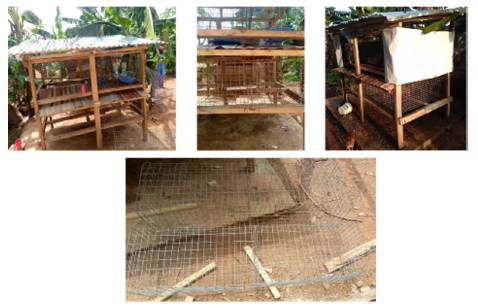
Figure 2 Pictorial views of a complete rabbit hutch showing (a) the frame, (b) the frame with the cages, (c) a hutch covered at the upper part with tarpaulin and (d) a complete cage ready for installation.
Rabbit hutch design. The sliding angle of the roofing sheet was estimated as 11.31° while the angle of repose of the roof for removing rabbit faecal pellets (droppings) was determined in the Agricultural and Environmental Engineering Laboratory, Federal University of Technology, Akure, Nigeria using a sliding box (Figure 3). The repose angle of the droppings ranged between 10° and 30°. However, for this study, an average of 20° was selected as an estimated angle of repose for the iron sheet for the rabbit droppings. According to Verga et al 10, the required floor space per rabbit, of weight ranging from 4.0 to 5.0 kg, is 0.24 to 0.30 m2 with a height of 0.40 to 0.6 m above the cage floor. In this study, an average floor space per rabbit of 0.30 m2 and a height of 0.45 m were used for rabbits with average weights of 1.5 to 3.0 kg to provide enough room for the rabbits. The total cost of developing the rabbit hutch was about two hundred and twenty-eight US dollars ($228.00).
Study location. The designed rabbit hutch was developed on a small-scale farm (Layolade Farms) located at Ipinsa, Akure South Local Government Area, Ondo State. The study area is located within the tropical rain forest 11 with latitude and longitude of 7.3210° N and 5.1445° E respectively. The study location is about 12.0 kilometres from Akure, the State Capital of Ondo State Nigeria, and about 44.0 km from the nearest airport (Akure Airport, Ondo State, Nigeria). The farm specialized in rearing different native animals such as poultry birds (layers and ducks), goats and rabbits. The farm has a total land area of 648 m2 on which a residential house was built and the remaining space used for rearing animals.
Instrumentation. In this study, IoT-based sensors were used (Figure 4). The sensor comprised two (2) DHT11 sensors which were used to measure temperature and relative humidity within and outside the rabbit hutch. The sensors operate on 5.0 V and have a temperature range of 0 °C to 50 °C, relative humidity range of 20 % to 90 % and accuracies of ±1.0 °C and ±1.0 % for temperature and relative humidity respectively. The data from the sensors were processed, monitored and stored on the internet through a Wi-Fi module called ESP8266. The module is a pre-programmed system on a chip (SOC) Wi-Fi microchip, suitable for IoT applications. The module could also give microcontrollers access to the Wi-Fi network and be capable of hosting different applications 12. The details of the sensors and the technical specifications could be in the work reported by Jongbo and Adelaja 13 transporting poultry birds over a long distance, and under unfavourable conditions, could cause a shift in their behaviours, and biochemical reactions, resulting in an increase in birds' traumatic injuries, weight loss, and poor meat quality. Therefore, a motorbike powered trailer was developed, having an average loading capacity of 50 to 54 broiler chickens, with a live body weight of 1.5 kg, for small-scale farmers. The climatic conditions (temperature and relative humidity
The data from the sensors was graphically monitored on the phone through a ThingsView platform. The platform is an application, downloaded on the phone from Google Play Store. The platform is directly connected to the ThingSpeak cloud server where the data from the sensors could be stored over Wi-Fi. The ThingSpeak has several libraries which support data analysis and is also an open-source application. This shows that the whole system could sense the climatic condition, immediately display the data and at the same time log the data. The data was logged online, and stored in a Google spreadsheet or CSV file format.
Data acquisition and analysis. During the study, eight adult rabbits of weights ranging from 1.3 to 1.8 kg were placed in the upper cage of the rabbit hutch (Figure 5) and fed interchangeably with grasses and commercial rabbit grower feeds ad libitum. The animals were also supplied with clean water regularly. The climatic conditions within and outside the hutch were monitored and measured. One of the DHT 11 sensors was placed outside the rabbit hutch and the second DHT 11 was placed within the hutch to monitor the temperature and relative humidity. The outdoor sensor was placed 0.20 m above the roof of the hutch while the indoor sensor was placed inside the grass holder to prevent the rabbits from damaging the sensor. The sensors were programmed with Arduino IDE to acquire data at an interval of one (1) minute for three and a half (3.5) hours from 12:00 noon to 3:30 pm. The period of the study was considered appropriate because the weather in the humid tropical climate starts to get warm, according to Jongbo 14, from midday (12:00 noon) and the warm condition was considered to negatively affect the microclimate of the rabbits. The data from the two sensors were monitored on the phone using the ThingsView application and later downloaded from the ThingSpeak cloud on a laptop (HP ProBook 4540s) for further processing.
The acquired data was processed on Microsoft Excel Professional Plus 2019 and analysed using JMP® Pro 13.0.0 (SAS Institute Inc. USA). A t-test analysis was conducted to determine the significance level between the mean indoor and outdoor climatic conditions of the rabbit hutch. To determine the thermal comfort of rabbits inside the hutch, the equation of heat stress index (Equation 1), and total heat production (Equation 2), as reported by previous authors 15,16 were adopted.
where is the heat stress index, is the air temperature (°C) inside the rabbit hutch, is the relative humidity (%) inside the rabbit hutch.
where is the total heat production (W) of rabbits within the hutch.
RESULTS AND DISCUSSION
Environmental parameters. The air temperature and the relative humidity within and outside the rabbit hutch were evaluated. The results, as shown in Figure 6, the outdoor air temperature varied from 31.8 to 44.5°C while that of indoor air temperature varied from 28.5 to 30.4°C during the study period. From the results, the mean outdoor air temperature was 38.30 ± 3.20°C and the mean indoor air temperature was 29.20 ± 0.33°C. The data were subjected to a t-test and the result indicated that there was a significant difference (p<0.0001) between the mean air temperatures of the outdoor and the indoor.
In a study carried out by Asemota & Orheruata 17, there was an indication that the rabbits used in the study were mostly exposed to air temperature varying from 31.2 to 35.0 °C which could be detrimental to their welfare and production due to the severeness of the heat stress to which the rabbits were subjected. However, the rabbit hutch developed in this study has shown that the air temperature within the hutch could be minimized even when the outdoor condition is extremely warm. This study has shown that rabbits would still be able to regulate their body temperature and also be prevented from heat prostration. According to Karoly et al 18, rabbits could be subjected to heat prostration when air temperature within the hutch exceeds 35.0°C.
It is detrimental to subject rabbits to high temperatures. It would result in reduced calcium, protein and albumin levels in rabbits 19, reduced conception rate, increased kindling interval and a higher rate of mating failure 16,17,9, reduced growth, low resistance to diseases and poor breeding performance 18. Subjecting rabbits to high temperature and high relative humidity could be stressful and detrimental to their health, production and welfare.
The relative humidity, to which rabbits are subjected in a hot climatic condition, could significantly affect their thermal comfort 20. The relative humidity, within and outside the hutch was evaluated and the results, as shown in Figure 7, showed that the outside humidity varied from 33.0 to 69.0% while that of inside varied from 73.0 to 82.0%. The mean indoor relative humidity and outdoor relative humidity were 44.99 ± 9.17% and 78.31 ± 1.74% respectively. The result of the statistical analysis indicated that there was a significant difference (p<0.0001) between the mean relative humidity of the outdoor and that of the indoor.
It could be observed that the indoor relative humidity was higher than that of the outdoor relative humidity. This indicates that the hutch in this study could hold a lesser amount of most air than the outdoor, leading to higher relative humidity when there was an increase in the outdoor air temperature. According to Nguyen et al 21, the outdoor relative humidity of the rabbit hutch may not be a good indicator of indoor relative humidity. According to Karoly et al 18, the indoor relative humidity of rabbit hutch, under stable conditions should be between 50.0 to 70.0 %. However, in the humid tropical climate, the relative humidity could reach 85.0% 22. Therefore, obtaining a maximum of 82.0% relative humidity in this study, showed that the hutch could provide adequate humidity for the rabbits during hot periods with an average air temperature not exceeding 30.0°C.
Figure 8 shows the interaction between indoor air temperature and indoor relative humidity. From the figure, the indoor temperature when indoor relative humidity was 82.0%, was 28. 7°C. As shown in the figure, it could be observed that as the indoor relative humidity increased, there was a reduction in the indoor air temperature. A similar result had been reported by some researchers 14,23 who indicated that as temperature increased, there was a decrease in relative humidity. Therefore, it is not appropriate to subject rabbits to high indoor relative humidity and high indoor air temperature as it could negatively affect their production 24.
Relationship between the total heat production and the heat stress index. The relationship between the total heat production and the heat stress index of the rabbits is shown in Figure 9. As indicated in the figure, it could be observed that as the heat stress in the rabbit hutch increased, there was an increase in the total heat production of the rabbit. The increase in heat production of rabbits could result in them showing signs of severe heat distress 10. From Figure 9, it could be observed that the heat stress index varied from 27.8 and 29.11 while the total heat production ranged from 5.69 to 7.93 kW.
The thermal comfort of rabbits could be determined by the level of heat stress in the hutch 16,25. It has been reported that at heat stress index (THI) < 27.8, rabbits are considered to be comfortable (that is, no heat stress). Between 27.8 and 28.9 heat stress index, rabbits could be considered to be moderately heat-stressed. As the heat stress index increased from 28.9 to 30.0, rabbits are considered to be subjected to severe heat stress. At above 30.0 heat stress index, rabbits are already subjected to very severe heat stress. In this study, the rabbits might not be subjected to heat stress as the heat stress index was mostly <28.0 though the outdoor air temperature was high. The relationship between the total heat production and the heat stress index of rabbits was further examined by developing a regression equation (Equation 3), which explained the percentage contribution of heat stress index to the total heat production of rabbits. From the equation, it could be deduced that a unit increase in the heat stress index of the rabbit would result in an increase of 1.342 kW in the total heat produced by the rabbit.
HPT=1.342(HSI)-31.41
where is the heat stress index.From Figure 9, it is clear that the regression equation accurately expressed the relationship between the total heat production and heat stress index. This was supported by the coefficient of determination (R2=0.938) which indicated that the regression equation explained 93.8% of the variability of the total heat production in relationship with the heat stress index. The accuracy of the regression equation was further measured using the root mean squared error which indicated 0.09.
In conclusion, a rabbit hutch was designed and developed to provide the appropriate environment for rabbits in the humid tropical climate. The thermal conditions within and outside of the hutch were evaluated. In addition, the heat stress index and the total heat production of the rabbits were evaluated using established equations in the literature. It was discovered that the indoor air temperature of the hutch was 23.79% lower than the outdoor air temperature while the indoor relative humidity was 74.07% higher than that of the outdoor relative humidity. Based on the regression equation, which showed the relationship between the total heat production and the heat stress index of the rabbits, it was found out that a unit increase in the heat stress index of the rabbits kept in the hutch reported in this study could result in 1.342 kW increase in the total heat production of rabbits. In addition, this type of housing system could be considered to provide the thermal comfort required by the rabbits during hot weather conditions. Further study on the behavioural response of rabbits to the climatic conditions, inside the rabbit hutch, needs to be carried out to ascertain the suitability of the hutch for the humid tropical climate.














